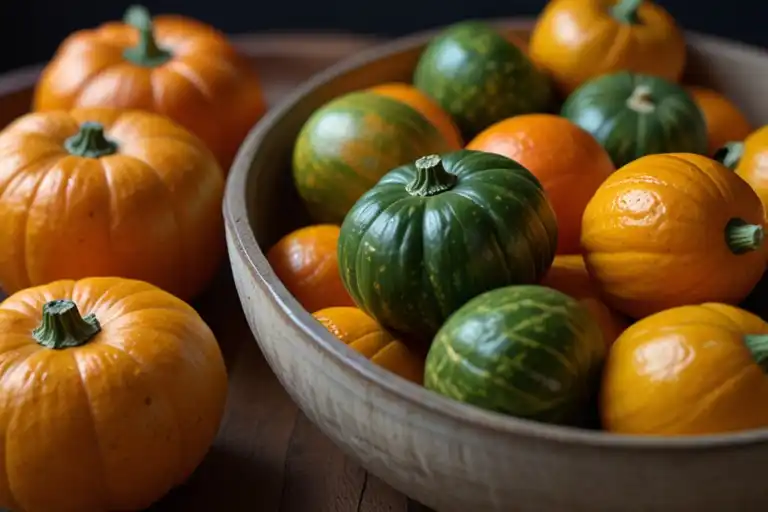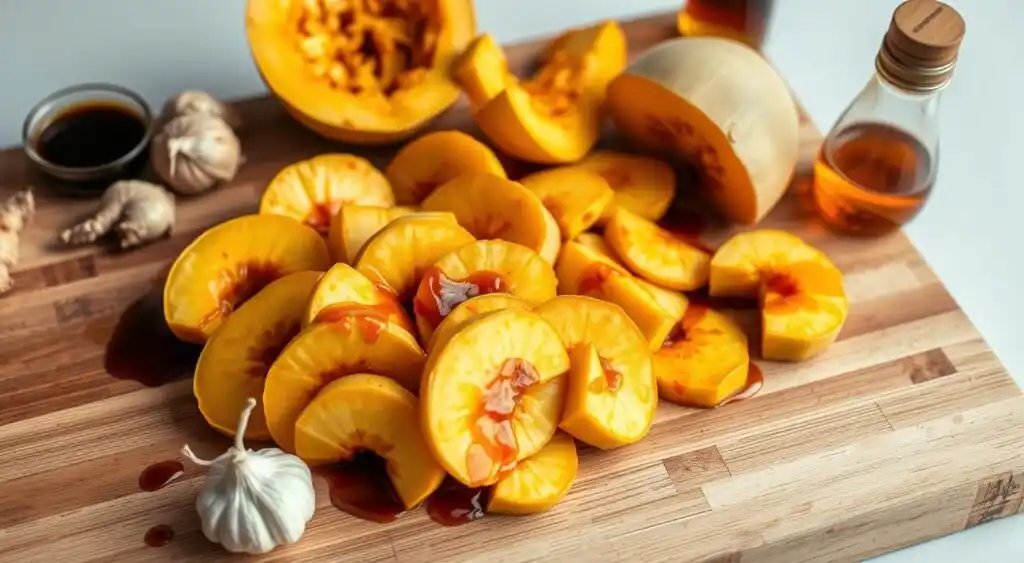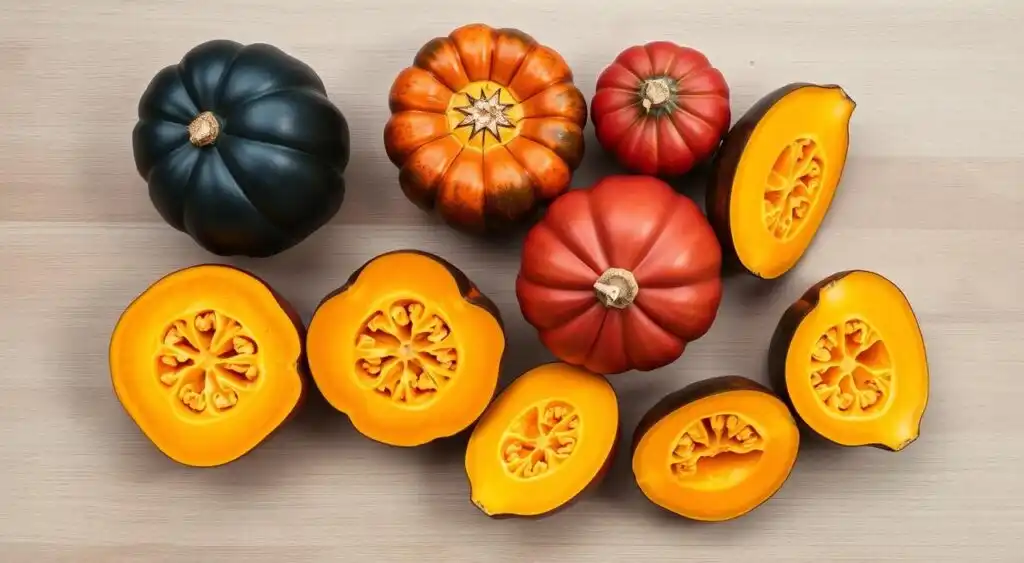Chinese squash recipes kabocha vegan: as the days grow shorter and the air turns crisp, there’s nothing quite like a warm, comforting meal to brighten your evening. Winter squash, with its rich texture and natural sweetness, has become a star ingredient in plant-based cooking. Its versatility makes it perfect for creating dishes that are both nourishing and satisfying.
In this article, you’ll discover how to transform kabocha squash into flavorful dishes that bring a touch of international flair to your table. From creamy curries to hearty bowls, these recipes are designed to inspire your culinary creativity. Whether you’re a seasoned cook or just starting out, you’ll find practical tips to make the process simple and enjoyable.
Get ready to explore the vibrant flavors and endless possibilities of winter squash. Let’s dive into a world of cozy, plant-based meals that will warm your heart and delight your taste buds.
Table of Contents
Introduction & The Allure of Kabocha Vegan Cooking
When it comes to creating hearty, flavorful meals, kabocha squash stands out as a versatile star. Its natural sweetness and creamy texture make it a favorite in plant-based cooking. Whether you’re crafting a comforting soup or a vibrant curry, this winter vegetable adds depth and richness to every bite.
Why Kabocha Squash is a Culinary Favorite
Kabocha squash is celebrated for its delightful balance of natural sweetness and earthy richness. Unlike many winter squashes, its tender, edible skin not only boosts the dish’s nutritional profile but also adds an appealing texture. When cooked, kabocha transforms into a luxuriously velvety base, ideal for soups, stews, and even desserts.
Its versatility shines in a myriad of culinary applications. For example, the inherent sweetness of kabocha pairs beautifully with robust spices like ginger, garlic, and chili, as well as with creamy ingredients such as coconut milk or tahini. This makes it a star in both traditional dishes and innovative recipes. Chefs and home cooks alike have embraced its potential in creating vibrant, plant-based meals.
Kabocha’s adaptability is particularly evident in international cuisines. In fact, its unique flavor and texture make it a fantastic ingredient in Chinese squash recipes, kabocha vegan enthusiasts adore. Whether it’s incorporated into stir-fries, blended into savory purees, or roasted to perfection, kabocha stands out as a versatile component that enhances both taste and nutritional value. Embracing kabocha in your cooking not only elevates your dishes with its complex flavor profile but also supports a wholesome, vegan lifestyle.
Exploring the Charm of Plant-Based Recipes
Plant-based cooking has rapidly evolved into a vibrant culinary movement, blending age-old traditions with inventive, modern techniques. Vegan recipes now showcase the natural brilliance of ingredients like kabocha squash, prized for its sweet, nutty flavor and impressive nutritional benefits. This versatile squash can easily become the star of dishes that celebrate both cultural heritage and contemporary creativity.
One exciting development in the plant-based realm is the infusion of global flavors into everyday meals. For example, innovative Chinese squash recipes kabocha vegan offer a delightful twist on traditional Asian cooking. These recipes take the tender, earthy texture of kabocha and combine it with classic Chinese ingredients and seasonings to create dishes that are both comforting and adventurous. Whether it’s a stir-fry bursting with aromatic spices or a delicate steamed dish, the incorporation of kabocha elevates the meal with its unique character.
Beyond its culinary versatility, kabocha squash serves as a bridge between health and taste. Its natural sweetness and creamy consistency make it a perfect addition to hearty curries, crisp salads, and savory stews. By integrating techniques from diverse cuisines—ranging from Thai-inspired curries to fusion recipes found in Chinese squash recipes kabocha vegan chefs and home cooks alike can explore new flavor profiles while enjoying nutrient-dense meals.
Embracing plant-based recipes is not just about creating meals; it’s about celebrating the global tapestry of culinary traditions. With ingredients like kabocha, every dish becomes an opportunity to experiment, innovate, and bring a touch of international flair to your table. Whether you are a seasoned vegan or simply curious about expanding your culinary repertoire, these recipes invite you to enjoy a healthier, more flavorful way of eating while honoring the rich diversity of global cuisine.

| Kabocha Squash Benefits | Why It Works in Vegan Cooking |
|---|---|
| Natural sweetness | Enhances flavor without added sugar |
| Creamy texture | Adds richness to soups and sauces |
| Nutrient-dense | Provides vitamins and fiber |
| Versatile | Works in both savory and sweet dishes |
Ready to dive deeper? In the next section, we’ll explore the essential ingredients and tools you’ll need to bring these recipes to life. From selecting the perfect squash to mastering the right spices, you’ll find everything you need to create unforgettable meals.
Essential Ingredients and Tools for Your Recipe
Creating a delicious meal starts with the right ingredients and tools. Whether you’re a seasoned cook or a beginner, having quality items on hand makes all the difference. This section will guide you through selecting the best ingredients and essential kitchen tools to ensure your dish turns out perfectly.
Selecting the Perfect Kabocha Squash and Seasonings
When choosing kabocha squash, look for one that feels heavy for its size and has a deep green rind with slight orange streaks. This indicates ripeness and natural sweetness. The edible skin adds extra nutrients and texture to your dish.
For seasoning, keep it simple yet flavorful. A mix of salt, pepper, and garlic enhances the squash’s natural taste. Add a teaspoon of ginger or a tablespoon of soy sauce for an extra layer of flavor. Roasting the squash at 400°F for about 30 minutes caramelizes its exterior, intensifying its sweetness.
Must-Have Kitchen Tools and Preparatory Tips
To prepare your dish efficiently, invest in a few key tools. A sharp knife and sturdy cutting board make chopping the squash easier. A high-powered blender is essential for creating smooth sauces, like a creamy cashew or coconut-based sauce.
Prep ahead by roasting the squash in advance. This saves time and ensures it’s ready to use when you start cooking. For safety, always use a stable surface when cutting and keep your knives sharp to avoid slips.
| Essential Tools | Preparation Tips |
|---|---|
| Sharp knife | Roast squash ahead of time |
| Cutting board | Use authentic seasonings |
| High-powered blender | Keep knives sharp for safety |
| Measuring cups | Chop squash evenly for even cooking |
Chinese squash recipes kabocha vegan: Step-by-Step Guide
Unlock the full potential of kabocha squash with this step-by-step guide. Whether you’re a beginner or a seasoned cook, these techniques will help you create a flavorful and satisfying dish.
Prepping, Chopping, and Cooking Techniques
Start by selecting a ripe kabocha squash. Look for a deep green rind with orange streaks. Wash the squash thoroughly, as the skin is edible and packed with nutrients.
Cut the squash in half using a sharp knife. Scoop out the seeds and slice it into even cubes. This ensures even cooking and a perfect texture.
Heat a tablespoon of oil in a pan over medium heat. Add diced onion, minced garlic, and grated ginger. Sauté until fragrant, about 2 minutes.
Stir in a tablespoon of red curry paste and cook for another minute. Add cubed kabocha squash and a cup of coconut milk. Simmer for 15-20 minutes until the squash is tender.

Tips for Balancing Flavors and Achieving Great Texture
To balance flavors, add a teaspoon of sugar and a pinch of salt. Adjust the seasoning as needed. For a tangy twist, a splash of lime juice works wonders.
Stir frequently to prevent sticking and ensure even cooking. The sauce should thicken slightly, coating the squash perfectly.
For added protein, toss in tofu or chickpeas. Serve your dish over steamed rice for a complete meal.
Experiment with spices like turmeric or cumin for a unique twist. The key is to let the natural sweetness of the squash shine while enhancing it with bold flavors.
Creative Variations and Global Inspirations
Transform your meals with global flavors inspired by kabocha squash. This versatile ingredient lends itself to endless creativity, allowing you to explore dishes from around the world. Whether you’re craving comfort food or something exotic, these variations will take your cooking to the next level.
From Thai Red Curry to Vegan Mac and Cheese
Start with a classic Thai red curry and give it a twist. Replace traditional ingredients with a creamy blend of cashews, miso, and Dijon mustard. This creates a rich, velvety sauce that pairs perfectly with roasted kabocha squash.
For a comforting fall dish, try vegan mac and cheese. Blend steamed kabocha squash with coconut milk, nutritional yeast, and a pinch of turmeric. The result is a cheesy, satisfying meal that’s both healthy and indulgent.

Customizing Your Dish with Unique Sauces and Spices
When it comes to preparing Chinese squash recipes kabocha vegan, the right sauce or spice can truly elevate the flavors of your dish, creating a unique and delicious experience. Start by experimenting with different combinations of ingredients to bring out the best in your kabocha squash. For a savory and tangy flavor, mix apple cider vinegar with olive oil and a teaspoon of miso paste. This creates a well-balanced dressing that adds depth and complexity to the squash without overwhelming its natural sweetness.
If you prefer a bit of heat, incorporate chili crisp or sambal oelek into your recipe. These spicy condiments infuse your dish with bold, zesty flavors and can be adjusted to your taste for the perfect level of spice. The heat complements the creamy texture of kabocha squash, making for a tantalizing contrast.
To add more texture and substance, consider including roasted Brussels sprouts or pre-fried tofu. Roasting the Brussels sprouts until crispy gives a satisfying crunch, while tofu adds protein and heartiness, transforming the dish into a more filling and satisfying meal.
For an extra burst of flavor, consider pairing your kabocha squash with pickled vegetables, which bring a tangy bite that enhances the richness of the squash. Drizzle the dish with a creamy tahini dressing to tie everything together, adding a smooth, nutty richness that balances the acidity of the pickled veggies. The combination of textures and flavors crunchy, creamy, spicy, tangy makes for a memorable meal that showcases the versatility of Chinese squash recipes kabocha vegan.
“The beauty of cooking lies in its flexibility. Don’t be afraid to mix and match ingredients to suit your taste.”
| Ingredient | Flavor Profile |
|---|---|
| Miso | Savory, umami |
| Dijon Mustard | Tangy, sharp |
| Chili Crisp | Spicy, crunchy |
| Tahini | Nutty, creamy |
Share your creations on social media and inspire others to experiment. Cooking is all about creativity, and kabocha squash is the perfect canvas for your culinary art.
Conclusion
Bringing warmth and creativity to your kitchen has never been easier. From Thai-inspired curries to comforting bowls, these dishes showcase the versatility of kabocha squash. Its natural sweetness and creamy texture make it a standout ingredient for any meal.
With simple steps and flexible recipes, you can create nourishing dishes that suit your taste. Whether you’re roasting, steaming, or blending, the process is straightforward and rewarding. You now have all the tools and tips to experiment confidently.
Try these recipes and make them your own. Share your creations online and inspire others to explore plant-based cooking. Balanced, flavorful meals are just a few steps away.
Ready to dive in? Start cooking today and enjoy the delicious results!
** Similar meals that may interest you: